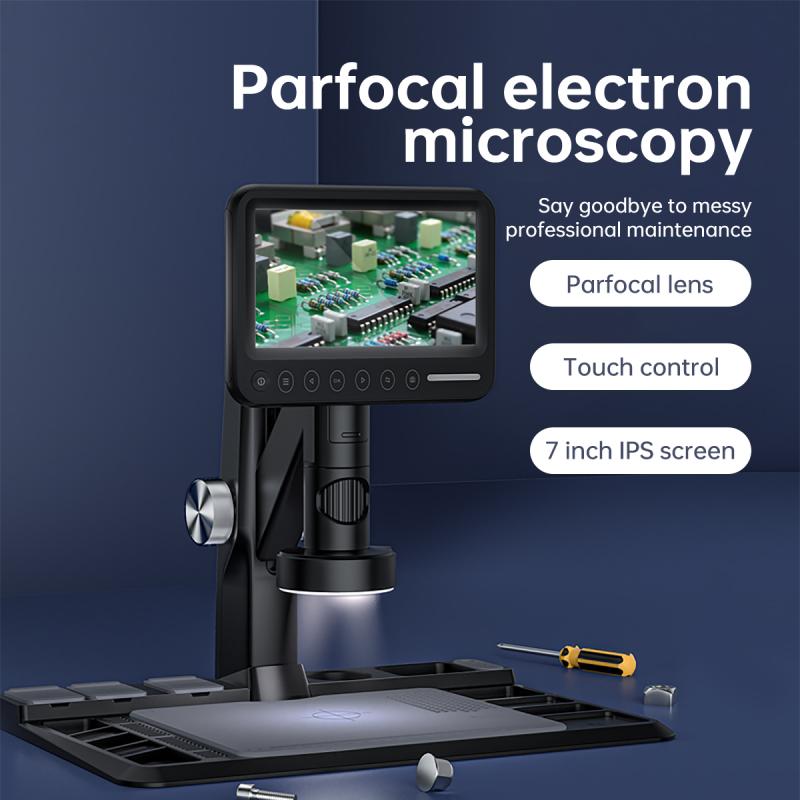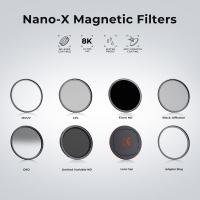Why Are Electron Microscopes Better ?
Electron microscopes are better than optical microscopes because they use a beam of electrons instead of light to magnify the specimen. This allows for much higher resolution and greater detail in the images produced. Additionally, electron microscopes have a much higher magnification power, allowing scientists to study objects at the atomic and molecular level. The use of electrons also enables the visualization of structures that are too small to be seen with optical microscopes, such as viruses and individual molecules. Overall, electron microscopes provide a more powerful tool for scientific research and have revolutionized our understanding of the microscopic world.
1、 Higher resolution and magnification capabilities
Electron microscopes are considered better than traditional light microscopes due to their higher resolution and magnification capabilities. This is primarily because electron microscopes use a beam of electrons instead of light to visualize specimens.
The resolution of a microscope refers to its ability to distinguish between two closely spaced objects. Electron microscopes have a much higher resolution compared to light microscopes. This is because the wavelength of electrons is much shorter than that of visible light. The shorter wavelength allows electron microscopes to visualize smaller details and structures within a specimen. As a result, electron microscopes can provide a more detailed and accurate representation of the specimen being observed.
In addition to higher resolution, electron microscopes also offer greater magnification capabilities. Electron microscopes can magnify specimens up to millions of times, allowing scientists to study the fine details of cells, tissues, and even individual atoms. This level of magnification is not achievable with light microscopes, which are typically limited to a maximum magnification of around 2000 times.
Furthermore, advancements in electron microscopy technology have led to the development of specialized techniques such as scanning electron microscopy (SEM) and transmission electron microscopy (TEM). These techniques allow for the visualization of different aspects of a specimen, such as its surface morphology or internal structure, respectively. This versatility makes electron microscopes invaluable tools in various scientific fields, including biology, materials science, and nanotechnology.
In recent years, there have been significant advancements in electron microscopy, such as the introduction of aberration-corrected electron microscopes. These instruments can correct for aberrations in the electron beam, resulting in even higher resolution and improved image quality. Additionally, the integration of electron microscopy with other techniques, such as spectroscopy and tomography, has further expanded the capabilities of electron microscopes.
In conclusion, electron microscopes are better than light microscopes due to their higher resolution and magnification capabilities. These instruments have revolutionized our understanding of the microscopic world and continue to play a crucial role in scientific research and discovery.

2、 Ability to visualize smaller objects and details
Electron microscopes are considered better than traditional light microscopes due to their ability to visualize smaller objects and details. This is primarily because electron microscopes use a beam of electrons instead of light to create an image. The shorter wavelength of electrons allows for higher resolution and magnification, enabling scientists to observe structures and features that are not visible with light microscopes.
The ability to visualize smaller objects and details is crucial in various scientific fields. In biology, electron microscopes have revolutionized our understanding of cellular structures and processes. They can reveal intricate details of organelles, such as mitochondria and endoplasmic reticulum, as well as visualize viruses and bacteria at a much higher resolution. This has led to significant advancements in fields like cell biology, microbiology, and virology.
In materials science, electron microscopes are invaluable for studying the atomic and molecular structure of materials. They can provide detailed information about the arrangement of atoms, crystal defects, and surface morphology. This knowledge is crucial for developing new materials with enhanced properties, such as stronger metals or more efficient semiconductors.
Moreover, recent advancements in electron microscopy techniques have further improved their capabilities. For example, the development of scanning transmission electron microscopy (STEM) allows for simultaneous imaging and chemical analysis at atomic resolution. This enables scientists to study the composition and distribution of elements within a sample, providing valuable insights into the behavior of materials at the nanoscale.
In conclusion, electron microscopes are better than light microscopes due to their ability to visualize smaller objects and details. Their high resolution and magnification capabilities have revolutionized various scientific fields, allowing for a deeper understanding of biological and materials systems. With ongoing advancements, electron microscopy continues to push the boundaries of scientific discovery.

3、 Enhanced depth of field and three-dimensional imaging
Electron microscopes are considered better than traditional light microscopes due to several reasons, including enhanced depth of field and three-dimensional imaging capabilities.
One of the main advantages of electron microscopes is their enhanced depth of field. Unlike light microscopes, which have a limited depth of field, electron microscopes can capture images with a much greater depth of focus. This allows for clearer and more detailed imaging of samples, especially those with complex structures or varying depths. The enhanced depth of field in electron microscopes is achieved by using a focused beam of electrons instead of light, which has a shorter wavelength and higher resolution.
Additionally, electron microscopes offer three-dimensional imaging capabilities. By using techniques such as electron tomography or scanning electron microscopy, researchers can obtain detailed three-dimensional information about the structure and morphology of samples. This is particularly useful in fields such as materials science, biology, and nanotechnology, where understanding the three-dimensional arrangement of objects is crucial.
Moreover, the latest advancements in electron microscopy technology have further improved its capabilities. For example, the development of aberration-corrected electron microscopy has significantly enhanced the resolution and image quality of electron microscopes. This technique corrects for aberrations in the electron beam, allowing for sharper and more detailed imaging at the atomic scale.
In conclusion, electron microscopes are better than traditional light microscopes due to their enhanced depth of field and three-dimensional imaging capabilities. These advantages, coupled with the latest advancements in electron microscopy technology, make electron microscopes indispensable tools in various scientific fields.

4、 Improved imaging of non-conductive samples
Electron microscopes are better than traditional optical microscopes due to their ability to provide improved imaging of non-conductive samples. This is primarily because electron microscopes use a beam of electrons instead of light to create an image, allowing for higher resolution and magnification.
In optical microscopes, the resolution is limited by the wavelength of light, which is around 500 nanometers. This means that objects smaller than this limit cannot be resolved. On the other hand, electron microscopes use a beam of electrons with a much smaller wavelength, allowing for much higher resolution. This enables scientists to observe and study structures at the nanoscale level, which is crucial in various fields such as materials science, biology, and nanotechnology.
Moreover, electron microscopes have the advantage of being able to image non-conductive samples. Traditional optical microscopes require samples to be conductive or coated with a conductive material to prevent charging and image distortion. However, electron microscopes can handle non-conductive samples without the need for any additional preparation. This is particularly important when studying biological samples or delicate materials that cannot withstand the coating process.
Furthermore, recent advancements in electron microscopy techniques have further enhanced their capabilities. For example, the development of scanning transmission electron microscopy (STEM) allows for simultaneous imaging and elemental analysis, providing valuable information about the chemical composition of a sample. Additionally, the introduction of aberration correction technology has significantly improved the resolution and image quality of electron microscopes.
In conclusion, electron microscopes are better than optical microscopes due to their ability to provide improved imaging of non-conductive samples. With their higher resolution, magnification, and recent advancements, electron microscopes have become indispensable tools in scientific research, enabling scientists to explore the intricate details of the nanoscale world.































There are no comments for this blog.